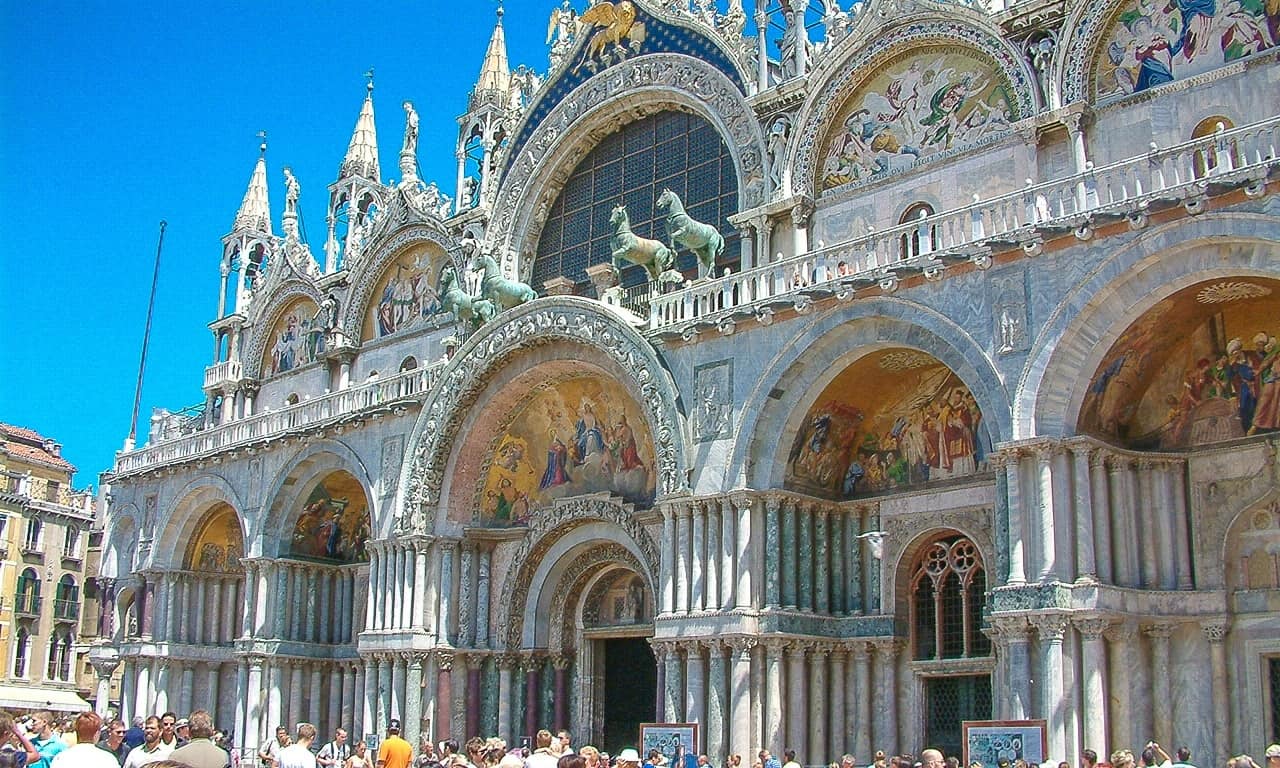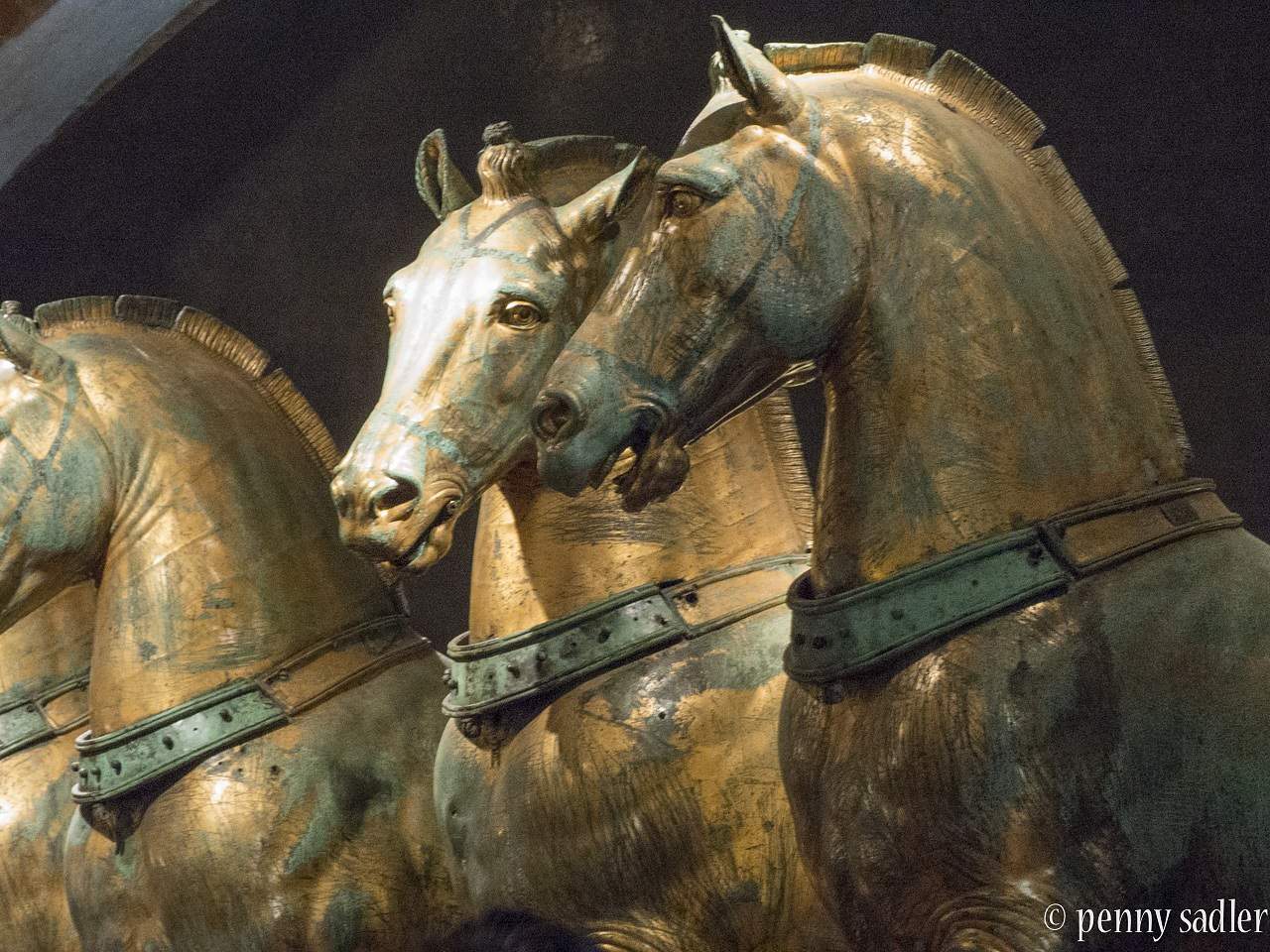- Goose
- Cogito ergo sum
 Offline
Offline 
- Registered: 1/29/2015
- Posts: 13,427
The Horses of Saint Mark's
The Horses of Saint Mark's Basilica.
What a treat to see these bronzes while in Venice. The Horses, along with many other things, were looted by the Venietian Republic. As a matter of fact, so much was brought to Venice that historians sometimes jokingly refer to the Venetian architectural style as Early Plunder.
The aquisition of the horses came in the aftermath of the shameful "4th Crusade".
But, It's a crime with a happy ending, however. If the statues had remained in Constantinople they most likely would have been destroyed when the Ottoman Turks took the city in 1453.
Today, these horses can be seen inside Saint Mark’s Basilica in Venice. When they came to Venice in 1254 they were placed on the front façade of the basilica, in pairs above the central portal. Given concern for their continued preservation because of increasing levels of air pollution, the horses were taken down and placed inside the church in the 1980s and replaced with replicas.
The Horses of Saint Mark, also known as the Triumphal Quadriga, is a set of Roman bronze statues of four horses, originally part of a monument depicting a quadriga (a four-horse carriage used for chariot racing). The horses were placed on the facade, on the loggia above the porch, of St Mark's Basilica in Venice, northern Italy after the sack of Constantinople in 1204. They remained there until looted by Napoleon in 1797 but were returned in 1815. 
The sculptures date from classical antiquity and have been implausibly attributed to the 4th century BC Greek sculptor Lysippos. A date in the 2nd or 3rd century AD is considered far more likely; the famous Equestrian Statue of Marcus Aurelius in Rome (c. 175 AD) provides a point of comparison. They were probably created to top a triumphal arch or some other grand building, perhaps commissioned by the Emperor Septimus Severus. They may originally have been made for the Eastern capital of Constantinople, and certainly reached there later.
It is certain that the horses, along with the quadriga with which they were depicted, were long displayed at the Hippodrome of Constantinople; they may be the "four gilt horses that stand above the Hippodrome" that "came from the island of Chios under Theodosius II" mentioned in the 8th- or early 9th-century Parastaseis syntomoi chronikai.They were still there in 1204, when they were looted by Venetian forces as part of the sack of the capital of the Byzantine Empire in the Fourth Crusade. The collars on the four horses were added in 1204 to obscure where the animals' heads had been severed to allow them to be transported from Constantinople to Venice. Shortly after the Fourth Crusade, Doge Enrico Dandolo sent the horses to Venice, where they were installed on the terrace of the façade of St Mark's Basilica in 1254. Petrarch admired them there.
In 1797, Napoleon had the horses forcibly removed from the basilica and carried off to Paris, where they were used in the design of the Arc de Triomphe du Carrousel together with a quadriga.
In 1815 the horses were returned to Venice by Captain Dumaresq. He had fought at the Battle of Waterloo and was with the allied forces in Paris where he was selected, by the Emperor of Austria, to take the horses down from the Arc de Triomphe and return them to their original place at St Mark's in Venice. For the skillful manner in which he performed this work the Emperor gave him a gold snuff box with his initials in diamonds on the lid.
The horses remained in place over St Mark's until the early 1980s, when the ongoing damage from growing air pollution forced their replacement with exact copies. Since then, the originals have been on display just inside the basilica.
(Wikipedia)
Last edited by Goose (9/28/2017 4:12 am)
We live in a time in which decent and otherwise sensible people are surrendering too easily to the hectoring of morons or extremists.
- tennyson
- Exchanger
 Offline
Offline 
- Registered: 2/06/2015
- Posts: 6,654
Re: The Horses of Saint Mark's
Venice was one of my favorites. We are pretty much done at this point with long trips unfortunately.
"Do not confuse motion and progress, A rocking horse keeps moving but does not make any progress"
 1 of 1
1 of 1